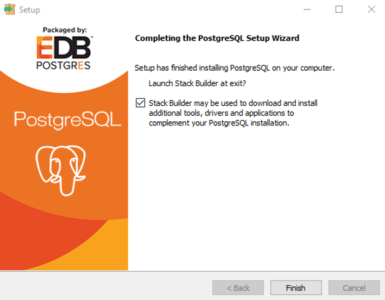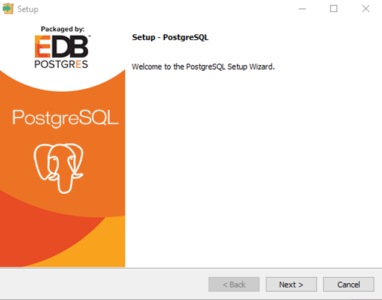

- Postgresql tutorial data file how to#
- Postgresql tutorial data file code#
- Postgresql tutorial data file password#
One potential downside is you must run it as a database superuser or as a user with permissions to read and write and execute files on the server - this isn't a concern when loading data for local testing, but keep it in mind if you ever want to use it in a more restrictive or production-like environment. You can even limit which rows are imported with a WHERE clause. The COPY command has a variety of options for controlling quoting, delimiters, escape characters, and more.
Postgresql tutorial data file code#
```sql - Excerpt from add-data-copy-csv.sql in the sample code repo COPY artists FROM '/repo/artists.csv' CSV HEADER COPY albums FROM '/repo/albums.csv' CSV HEADER COPY genres FROM '/repo/genres.csv' CSV HEADER COPY album_genres FROM '/repo/album_genres.csv' CSV HEADER ``` We can import the data from these CSV files into a PostgreSQL database with the () command: !() *A small, static sample dataset of musical artists, albums, and genres.* The CSV files contain headers and data rows as shown in the image below. In the (), there are 4 small CSV files, one for each table of the sample schema. The simplest way to get test data into PostgreSQL is to make a static dataset, which you can save as CSV files or embed in SQL files directly. !() *Sample schema relating musical artists, albums, and genres.* Musical artists have a name - An artist can have many albums (one-to-many), which have a title and release date - Genres have a name - Albums can belong to many genres (many-to-many) ```bash docker exec -interactive -tty postgres \ psql -host=localhost -username=postgres ```įor example code and data, I'll use the following simple schema:

If you want to interactively poke around the database with `psql`, use: ```bash docker exec -workdir=/repo postgres \ psql -host=localhost -username=postgres \ -file=add-data-sql-copy-csv.sql ``` After the Postgres Docker container is running, you can run `add-data-` files in a new terminal window with a command like: The repo contains a variety of files that start with `add-data-` which demonstrate different ways of loading and generating test data. The PostgreSQL server is started with the `log_statement=all` config override, which increases the logging verbosity. The repo is also mounted to `/repo` inside the container, so example SQL and CSV files are accessible. The above command mounts `schema.sql` into that folder, so the database tables will be created. Executable scripts (`*.sh` and `*.sql` files) in the `/docker-entrypoint-initdb.d` folder inside the container will be executed as PostgreSQL starts up.
Postgresql tutorial data file password#
The base postgres image requires a password to be set (via the `POSTGRES_PASSWORD` environment variable), but we'll just be testing locally, so no need to set a strong password. docker run -name=postgres -rm -env=POSTGRES_PASSWORD=foo \ -volume=$(pwd)/schema.sql:/docker-entrypoint-initdb.d/schema.sql \ -volume=$(pwd):/repo \ postgres:latest -c log_statement=all ``` ```bash # The base postgres image requires a password to be set, but we'll just be # testing locally, so no need to set a strong password. Want to follow along? I've collected sample data and scripts in a subfolder of our Tangram Vision blog repo: ()Īs described in the repo's README, you can run examples using the () with: If you're interested in *generating* test data instead of (or in addition to) loading test data, please check out the ()! I won't dive into that debate - it's up to the creator to decide if a project should use an ORM or not, and that decision depends on a lot of project-specific factors, such as the expertise of the creator and their team, the types and velocity of data involved, the performance and scaling requirements, and much more. > Wait a minute, why would you build a webapp without an ORM?! This question could spawn an entire article of its own and in fact, () () () () () () () for the last couple decades.

I hope this article will help fill that gap, exploring and discussing different approaches for creating and loading test data in PostgreSQL. What tools and approaches are available, and which work best? There are a lot of articles around the internet that describe specific techniques or example code in isolation, but few that provide a broader survey of the many different approaches that are possible.
Postgresql tutorial data file how to#
If you're building a webapp without an ORM, the story for how to create and load test data is less clear. Most web apps/services that use a relational database are built around a web framework and an Object-Relational Mapping (ORM) library, which typically have conventions that prescribe how to create and load test fixtures/data into the database for testing.


 0 kommentar(er)
0 kommentar(er)
